Advancing research with cutting-edge technology to perceive and measure the world, validating change for communities, industry, and the environment.
The UQ Drones Collaborative Research Platform is a leading hub for drone-based research and innovation, providing researchers, industry partners, and government agencies with access to cutting-edge remote sensing technology and expertise.
With a vast library of drones, advanced remote sensing capabilities, and a fully equipped workshop, we can provide custom builds and specialised payload integration. The platform supports diverse research fields, including environmental science, geophysics and agriculture, ensuring efficient and safe operations. A multidisciplinary team of experts provides piloting, data analysis and project management, helping researchers and industry partners achieve groundbreaking results with streamlined workflows.



Steven Micklethwaite Reilly Williamson Craig Jarvis
Director Chief Remote Pilot Maintenance Controller
Researchers
The UQ Drones Collaborative Research Platform helps researchers by providing and developing custom drone technology. With a library of advanced drones, specialized remote sensing payloads, and a fully equipped workshop, researchers can conduct direct sampling, environmental monitoring, and geospatial studies with precision. Whether you need a drone to collect and analyse bush fire smoke samples for a health study, map the environment or survey an ancient indigenous archaeological site, we can provide a solution.
Industry
The UQ Drones Collaborative Research Platform supports industry by delivering advanced drone solutions to solve real-world challenges. With access to strictly maintained drones, specialized payloads, and expert consultation, businesses can enhance operations in mining, agriculture, geophysics, environmental monitoring and more. Our team consists of industry experienced pilots and field technicians who know exactly what it takes to meet the demands of your business. We are fully CASA compliant and conform to Quality Assurance and Quality Control standards.
Hyperspectral Imaging Surveys with HySpex VS-620:
Our hyperspectral imaging services utilize the HySpex Mjolnir VS-620, a high-performance, co-aligned VNIR-SWIR sensor designed for scientific-grade remote sensing. With 490 spectral bands and exceptional coregistration accuracy, this system delivers detailed spectral data across a wide range of applications—from mineral exploration to environmental monitoring.
Key Features of Our Hyperspectral Imaging Services
Comprehensive Spectral Coverage
- Full VNIR-SWIR range: 400 – 2500 nm
- 490 spectral bands with 5.1 nm sampling resolution
- Ideal for precise material identification and classification
Superior Data Quality
- Keystone and smile distortion <0.1 pixels for sharp, geometrically accurate imagery
- Peak signal-to-noise ratio (SNR) >900 for high-fidelity spectral data
UAV-Optimized Design
- Lightweight (6 kg) and compact for efficient aerial deployment
- Co-aligned VNIR and SWIR optical axes for perfect coregistration in flight direction
High-Speed Data Acquisition
- Frame rate up to 100 fps for rapid survey coverage
- 16-bit raw data resolution for enhanced dynamic range and detail
Applications
- Mineral Exploration – Spectral mapping of surface mineralogy
- Agriculture & Forestry – Crop health, vegetation stress, and biodiversity analysis
- Environmental Monitoring – Pollution detection, water quality assessment, and land change analysis
- Geological & Infrastructure Surveys – Terrain classification and material inspection
By leveraging the HySpex VS-620, we deliver high-resolution hyperspectral datasets tailored for scientific research, environmental sustainability, and industrial applications.
Bathymetric LiDAR Surveys with RIEGL VQ-840-GE:
Our bathymetric LiDAR services utilize the RIEGL VQ-840-GE, a state-of-the-art airborne laser scanner designed for simultaneous topographic and bathymetric mapping. Using a narrow green laser beam (532 nm), this system penetrates water surfaces to accurately measure submerged terrain—ideal for coastal, riverine, and reservoir environments.
Key Features of Our Bathymetric LiDAR Services
High-Precision Subsurface Mapping
- Echo digitization and online waveform processing for detailed elevation data
- Accurate measurement of both terrestrial and underwater topography
Efficient Data Acquisition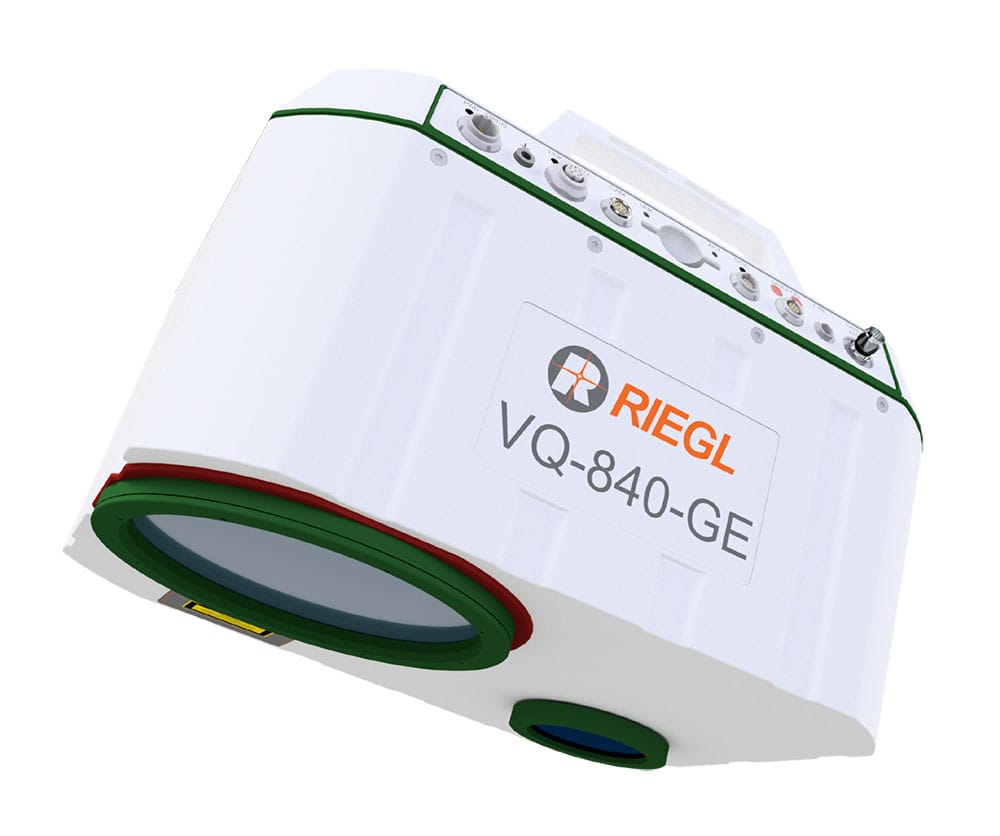
- Laser pulse repetition rate up to 100 kHz
- Scanning speeds up to 100 lines per second
- High spatial resolution for dense 3D point clouds
Integrated Positioning & Imaging
- Advanced GNSS/IMU integration for precise geolocation
- Optional high-resolution aerial imaging for enhanced context and analysis
Applications
- Coastal & Shallow Water Mapping – Shoreline delineation and bathymetric profiling
- River & Stream Surveys – Channel morphology and sediment transport studies
- Reservoir & Wetland Monitoring – Water body volume estimation and habitat assessment
- Infrastructure Planning – Bridge, dam, and levee inspections
By combining high-resolution LiDAR technology with robust positioning and imaging systems, we deliver reliable bathymetric datasets tailored for environmental research, engineering design, and resource management.
Topographic LiDAR Surveys with RIEGL VUX-120:
Our topographic LiDAR services utilize the RIEGL VUX-120, a high-performance UAV LiDAR sensor engineered for precision and high-density aerial mapping. Featuring a 100° field of view and a unique Nadir/Forward/Backward (NFB) scanning pattern, the VUX-120 ensures exceptional data completeness—even in complex environments with vertical structures, dense vegetation, or narrow corridors.
Key Features of Our Topographic LiDAR Services
High-Speed, High-Density Data Collection
- Laser pulse repetition rate up to 2.4 MHz
- Measurement rates up to 2,000,000 points per second
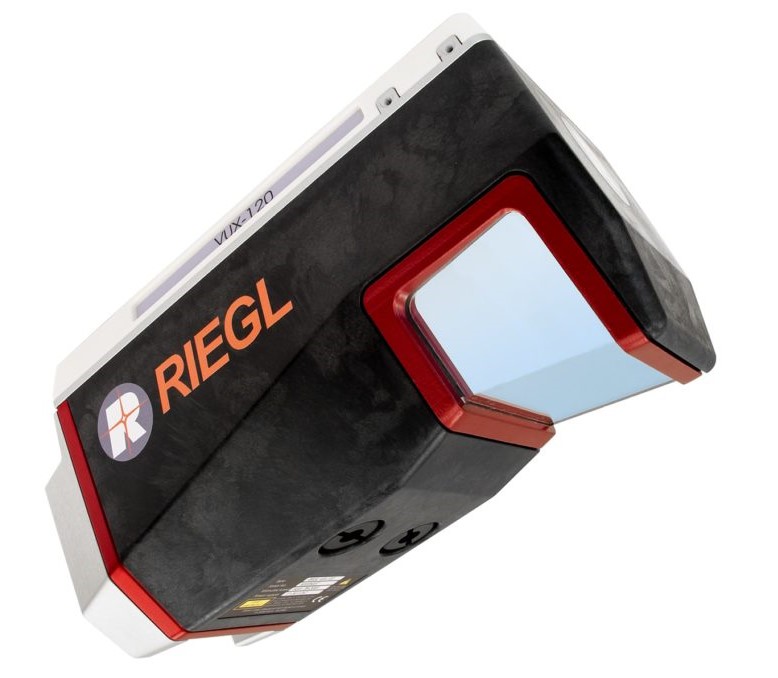
- Ideal for capturing fine-scale terrain and structural detail
Advanced Scanning Geometry
- NFB scanning pattern for enhanced coverage and minimal shadowing
- 100° field of view for wide-area mapping
Precision Mapping Capabilities
- Accurate elevation and surface modeling in rugged terrain
- Reliable performance in urban, forested, and canyon-like environments
Applications
- Mining & Topographic Surveys – Detailed terrain modeling and volumetric analysis
- Urban & Environmental Monitoring – Infrastructure mapping and change detection
- Forestry & Agriculture – Canopy structure, biomass estimation, and land-use classification
- Archaeology & Cultural Heritage – Site documentation and landscape reconstruction
- Corridor Mapping – Power lines, railways, roads, and pipeline inspections
By leveraging the RIEGL VUX-120, we deliver high-resolution 3D LiDAR data tailored for scientific research, environmental management, and infrastructure development.
Airborne LiDAR with Elitescan W50:
Our airborne LiDAR services utilize the Elitescan W50, a compact and highly integrated system developed by EPiC LiDAR. Combining a high-performance laser scanner, IMU, and aerial camera, the W50 delivers exceptional range, precision, and vegetation penetration—making it ideal for complex terrain and dense canopy environments.
Key Features of Our Airborne LiDAR Services
Lightweight & UAV-Optimized
- Total system weight of just 1.4 kg (including 26MP camera)
- Compatible with DJI M300/M350, multirotor, and fixed-wing platforms
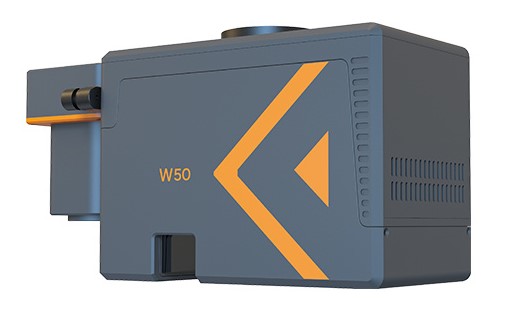
- Quick-release interface for rapid deployment
Long-Range & High-Efficiency Scanning
- Operating flight height up to 450 m
- Measurement range up to 1000 m (80% reflectivity)
- Scanning speed up to 300 lines/sec with point frequencies up to 1 MHz
Exceptional Ground Penetration
- Up to 7 echo returns for reliable ground point acquisition through vegetation
- 90° field of view for wide-area coverage
High-Precision Geospatial Data
- System accuracy: 5 cm (plane) / 3 cm (elevation) @150 m
- Post-processed positioning accuracy: 1 cm (plane) / 2 cm (elevation)
- Attitude accuracy: Heading 0.04°, Pitch/Roll 0.008°
Integrated Imaging Capabilities
- 26MP or 45MP aerial camera options
- Image resolutions up to 8192×5468 with FoV up to 90°
- Ground Sampling Distance (GSD): ~2.1–2.3 cm @100 m flight height
Applications
- Forestry & Vegetation Mapping – Penetrate canopy to model terrain and biomass
- Topographic & Terrain Surveys – High-resolution elevation models
- Infrastructure & Corridor Mapping – Power lines, roads, and pipelines
- Environmental Monitoring – Floodplain analysis, erosion studies, and habitat mapping
By leveraging the Elitescan W50, we deliver high-density, precision LiDAR data tailored for scientific research, environmental management, and infrastructure development.
Airborne Geophysical Surveys – Magnetics, EM & Gravity:
Our airborne geophysical survey services offer high-resolution magnetic, electromagnetic (EM), and gravity data acquisition using advanced instrumentation tailored for precision and reliability. Central to our magnetic survey capability is the Scintrex CS-VL Cesium Vapor Magnetometer, a state-of-the-art sensor designed for sensitive and accurate magnetic field measurements.
Key Features of Our Magnetic Survey Services
Ultra-Sensitive Magnetic Detection
- Sensitivity: 0.0006 nT/√Hz rms
- Absolute accuracy: <2.5 nT
- Enables detailed mapping of subtle magnetic anomalies

Broad Measurement Range
- Operates across 15,000 to 105,000 nT
- Suitable for diverse geological, environmental, and archaeological applications
Advanced Data Processing & Interpretation
- Specialized software for magnetic data processing and visualization
- Delivers clear, actionable insights for exploration and analysis
Applications
- Mineral Exploration – Detect subsurface mineral deposits and structures
- Geological Mapping – Characterize lithology and structural features
- Environmental & Archaeological Surveys – Identify buried features and contamination zones
By integrating high-sensitivity magnetometry with robust airborne platforms and expert data analysis, we provide comprehensive geophysical datasets to support research, resource development, and environmental monitoring.
Multispectral Imaging with Sony ILX-LR1 Sextuple Lens:
Our multispectral imaging surveys utilize the Sony ILX-LR1 Sextuple Lens, a cutting-edge dual-purpose mapping solution optimized for drone-based research applications. This lightweight yet powerful system delivers high-resolution RGB mapping and advanced multispectral data acquisition for a wide range of scientific and environmental studies.
Key Features of Our Multispectral Imaging Services:
High-Resolution Data Collection
- 61MP RGB mapping for highly detailed aerial imagery
- 14-band multispectral imaging (7MP per band) or 13 bands + wide RGB for
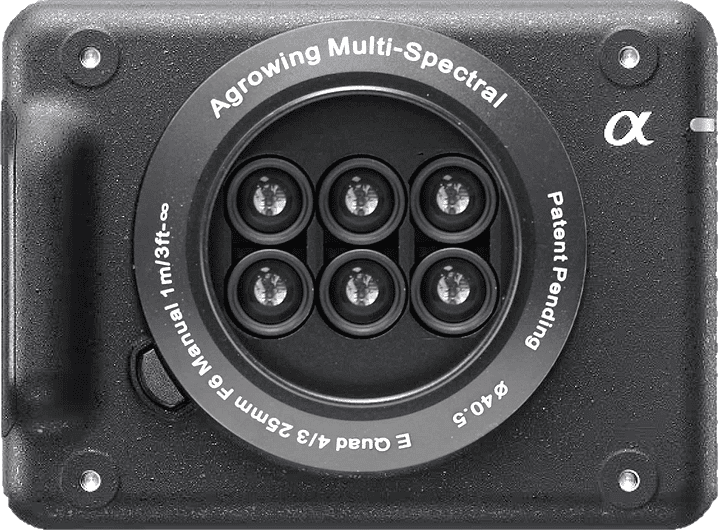 comprehensive spectral analysis
comprehensive spectral analysis
Precision-Tuned Spectral Bands
- 30nm wide spectral bands: 405, 430, 450, 490, 525, 550, 560, 570, 630, 650, 685, 710, 735, 850 nm
- Optimized for vegetation analysis, environmental monitoring, and land-use studies
Lightweight & UAV-Optimized
- Compact full-frame E-Mount system (424g total weight)
- Designed for seamless UAV integration, enabling high-efficiency aerial surveys
Advanced Lens System
- Sextuple single mount lens for precise spectral separation
- 21.8mm effective focal length, f/5.6 aperture, and low distortion (<2%) for superior image quality
Applications
- Precision Agriculture – Crop health monitoring, vegetation stress analysis
- Environmental Studies – Land cover classification, ecosystem monitoring
- Infrastructure & Urban Planning – Remote sensing of built environments
- Forestry & Conservation – Biomass estimation, habitat analysis
By leveraging the ILX-LR1 Sextuple Lens, we provide high-accuracy multispectral data tailored for scientific research, industry applications, and environmental sustainability initiatives.
Gamma-Ray Surveys with Medusa MS-2000:
Our gamma-ray spectrometry services utilize the Medusa MS-2000, a rugged, vehicle-borne sensor designed for high-efficiency radiometric mapping. Engineered for autonomous operation and real-time data processing, the MS-2000 is ideal for environmental, geological, and industrial applications requiring precise radionuclide detection.
Key Features of Our Gamma-Ray Survey Services
Robust & Field-Ready Design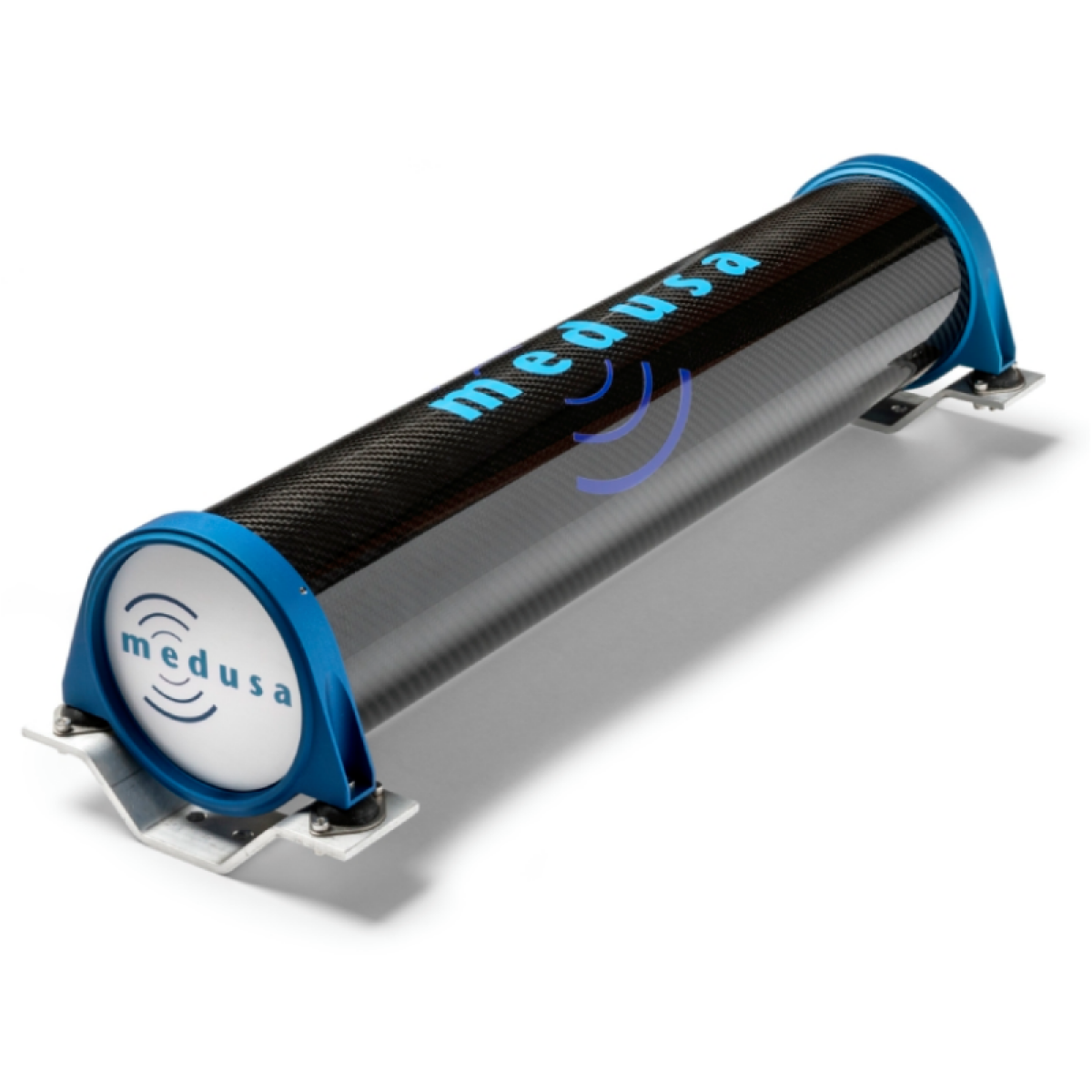
- Kevlar-reinforced carbon fiber housing with vibration-dampening mount
- IP65-rated for operation in harsh environments
- Operates across a wide temperature range: –20 to +65 °C
High-Performance Spectrometry
- 2000 ml CsI scintillator crystal for sensitive gamma-ray detection
- Real-time radionuclide analysis of ^40K, ^238U, ^232Th, and ^137Cs
- Mapping speeds up to 45 km/h with 5 Hz recording frequency
Integrated Data & Connectivity
- Internal 16 GB storage (up to 500 hours of data)
- Data formats: JSON, NMEA, CSV
- Streaming via RS-232, Ethernet, and Wi-Fi (2.4 & 5 GHz)
Advanced Software Ecosystem
- mDOS for real-time monitoring, survey planning, and radionuclide inspection
- GammAn for post-processing with Full Spectrum Analysis (FSA) and Window Analysis (WA)
Applications
- Soil and sediment scanning
- NORM (Naturally Occurring Radioactive Material) characterization
- Contamination mapping and environmental monitoring
- Ground-based radiometric surveys using vehicles or UAVs
By deploying the Medusa MS-2000, we deliver accurate, efficient, and scalable gamma-ray data tailored to scientific research, environmental assessments, and industrial safety operations.
Payload Equipment List:
Riegl VQ-840-GE Topo-Bathymetric LiDAR.
Mjolnir Hyspex VS 620 Co-Aligned Hyperspectral Camera
Elitescan W50 LiDAR
Medusa MS-2000 – Gamma-ray Spectrometer
Riegl VUX-120 - LiDAR
Sony ILX-LR1 61MP Sextuple Lens (Photogrammetry/Multispectral)
Sony ILX-LR1 61MP Quad Lens (Photogrammetry)
Drone Equipment List:
ARACE Angel - Long endurance multi-rotor
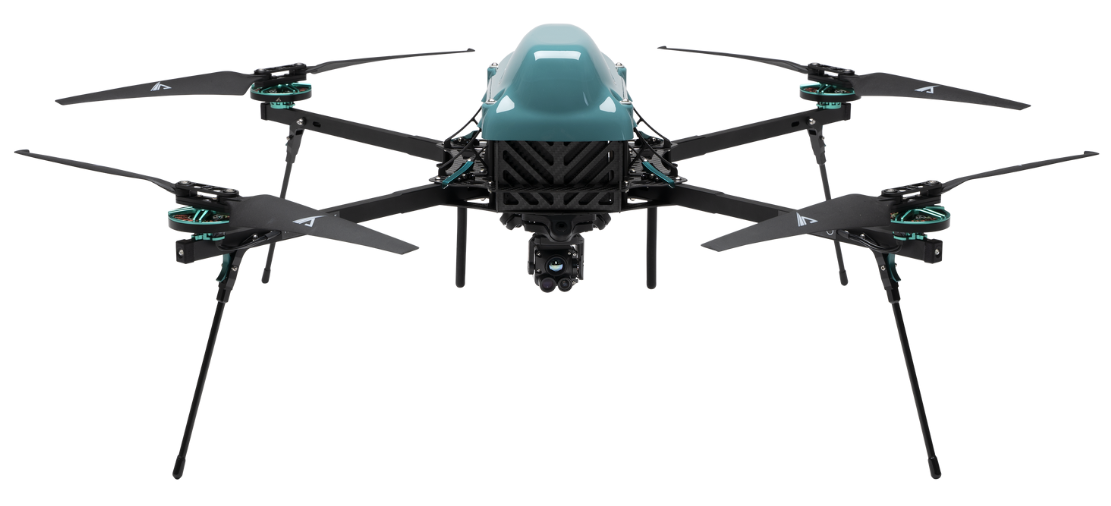
Arace Pheonix - Long range BVLOS fixed wing drone (VTOL)

Callisto 50 – Heavy lift drone

Acecore NOA – Heavy lift drone

DJI Mavic 3M - Multispectral
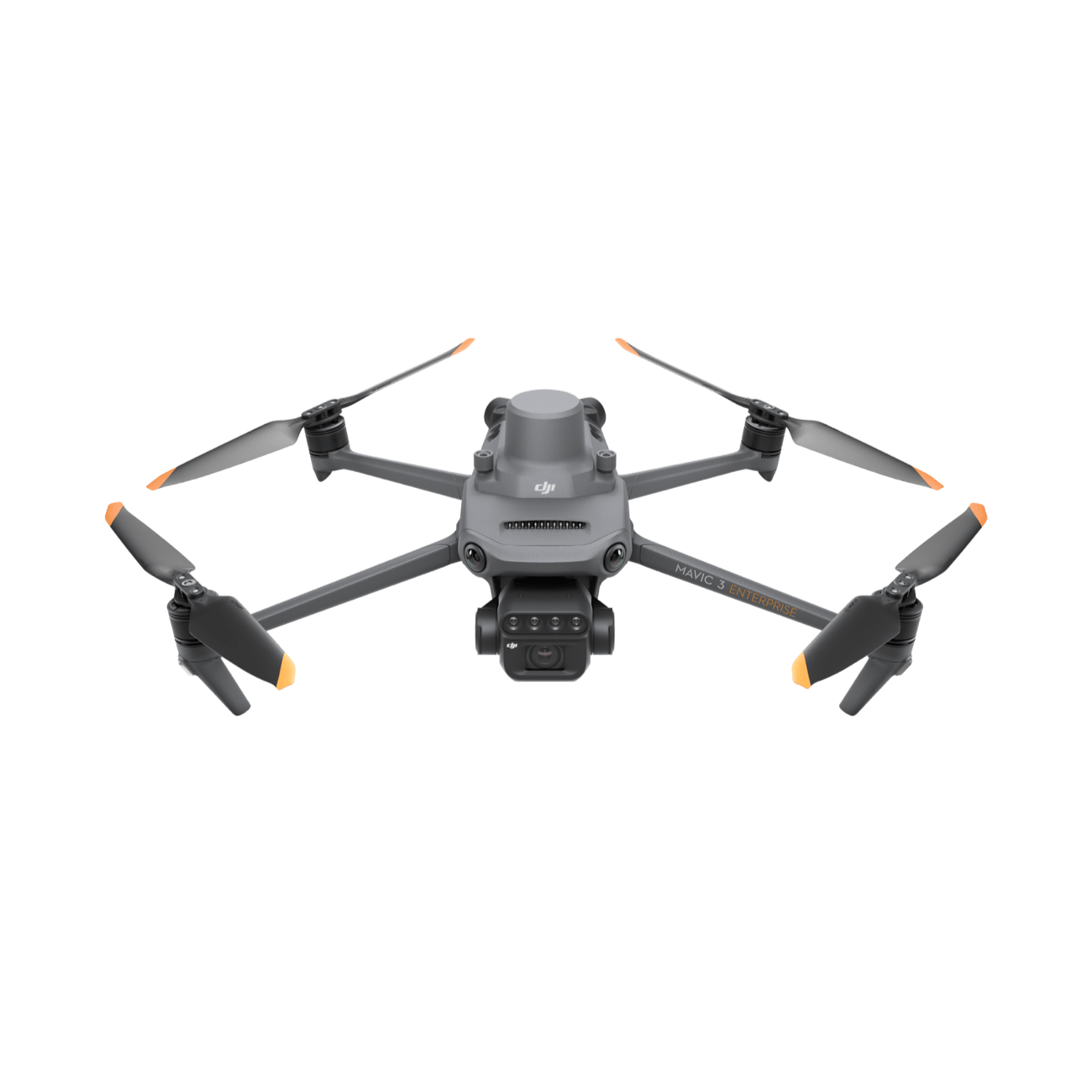
Contact us
Get in touch with our team today to get your next project off the ground.
Email: drones@uq.edu.au
Location: St Lucia Campus, Brisbane
